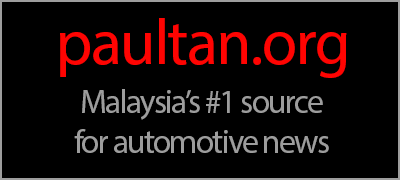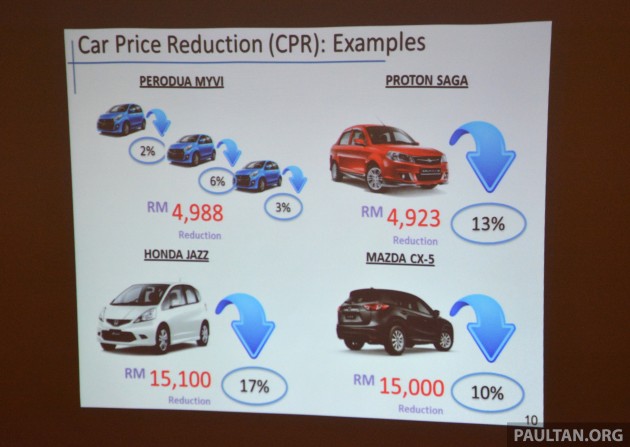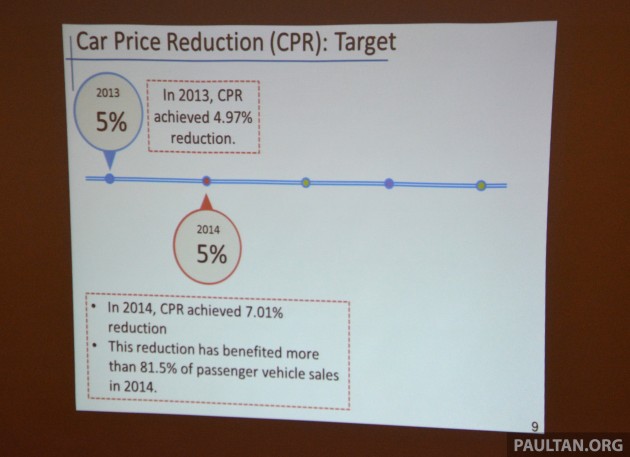At the just-concluded National Automotive Policy (NAP 2014) status update, Minister of International Trade and Industry Datuk Seri Mustapa Mohamed claimed that on average, car prices dropped 7.01% across all models and variants introduced last year, compared to a 4.97% reduction in 2013.
He said that the lower prices benefitted some 72.5% of Malaysian car buyers in 2014, and that the aim is to gradually reach an average 20% reduction by end-2017.
The slide above undoubtedly raises a few eyebrows – we recognise the Mazda CX-5‘s RM15k drop as a result of local assembly (CKD), but we’re curious as to how the Honda Jazz‘s RM15,100 drop is derived. However, the previous-gen CKD Jazz petrol was priced at RM74,800, and its Hybrid counterpart RM89,900 – the difference is exactly RM15,100…
With regards to the Perodua Myvi, the 2%, 6% and 3% drops probably represent the 2011 Premium to 2013 SE, down to 2014 XT and finally to the 2015 facelift. The Proton Saga‘s 13% drop of RM4,923 is likely derived from the difference between the 2011 Saga FLX Standard and the 2013 Saga SV.
Under NAP 2014’s Car Price Reduction Framework, MITI expects car prices to go down through increased competition brought about by the liberalisation of the industry, rather than the reduction or abolishment of excise duties.
Looking to sell your car? Sell it with Carro.













AI-generated Summary ✨
Comments on the blog post reveal widespread skepticism about the claimed 7% average price drop, with many asserting that actual reductions are due to stripping down car specifications or localized CKD assembly, not genuine price decreases. Several comments criticize government and MITI for manipulating figures, spreading misinformation, and failing to address the root causes like high taxes, duties, and protectionism for Proton. There is frustration over inflated car prices compared to other countries, with accusations of corruption, cronyism, and economic mismanagement contributing to the high costs. Many commenters dismiss government promises of a 20-30% reduction by 2017 as unrealistic or mere propaganda, emphasizing that true affordability is obstructed by taxes, import duties, and protection policies benefiting local manufacturers at consumers’ expense.